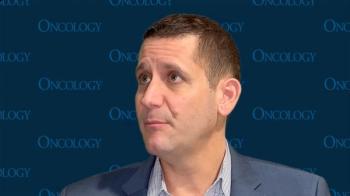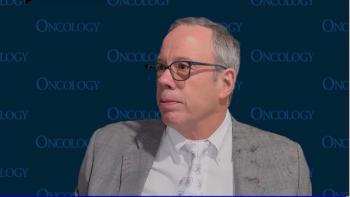
Ola Landgren, MD, PhD, on Frontline Standards With Daratumumab for Multiple Myeloma at EHA 2021
CancerNetwork® sat down with Ola Landgren, MD, PhD, at the 2021 EHA Congress to talk about his presentation on first-line standard of care for multiple myeloma.
At the 2021 European Hematology Association (EHA) Congress, CancerNetwork® spoke with Ola Landgren, MD, PhD, about his presentation on treating patients with multiple myeloma, the importance of minimal residual disease (MRD), and emerging trends in the space.
Transcript:
At EHA 2021, I’m giving a talk entitled “New Momentum in First-Line Therapy.” I try to highlight, first of all, that MRD is the strongest predictor of clinical outcomes in patients with myeloma, and I refer to the 3 meta-analyses that have been published. Also, I shed light on some new studies; one of them is the GRIFFIN study [NCT02874742] that builds on the old VRd [bortezomib (Velcade), lenalidomide (Revlimid), and dexamethasone] paradigm that was developed initially by Paul G. Richardson, MD, and colleagues at the Dana-Farber Cancer Institute. The GRIFFIN study adds daratumumab [Darzalex], still with a transplant, showing that you can increase the MRD rate from 20% to 51%.1 [Patients on the trial were treated with] 6 cycles of therapy without and with daratumumab with a bone marrow transplant.
I also show the MANHATTAN trial that comes from [Memorial] Sloan Kettering and which we published in JAMA Oncology,2 delivering 71% MRD negativity with 8 cycles [of carfilzomib (Kyprolis), lenalidomide, and dexamethasone] without the transplant. That’s a pretty spectacular result.
Then I show data on sustained MRD negativity that seems to be a very strong predictor of long freedom from progression and also survival. And then I asked the question in this presentation, “where’s the field going?” My prediction is, as I already touched on here today, lack of detectable disease or sustained MRD negativity using more modern therapies, [such as] immunotherapy-based regiments, could continue to result in longer progression-free survival, but maybe also could deliver some cure in some patients. So those are questions I addressed in my talk.
References
1. Voorhees PM, Kaufman JL, Laubach J, et al. Daratumumab, lenalidomide, bortezomib, and dexamethasone for transplant-eligible newly diagnosed multiple myeloma: the GRIFFIN trial. Blood. 2020;136(8):936-945. doi:10.1182/blood.2020005288
2. Landgren O, Hultcrantz M, Diamond B, et al. Safety and Effectiveness of Weekly Carfilzomib, Lenalidomide, Dexamethasone, and Daratumumab Combination Therapy for Patients With Newly Diagnosed Multiple Myeloma: The MANHATTAN Nonrandomized Clinical Trial. JAMA Oncol. published April 15, 2021. doi:10.1001/jamaoncol.2021.0611
Newsletter
Stay up to date on recent advances in the multidisciplinary approach to cancer.

















































































